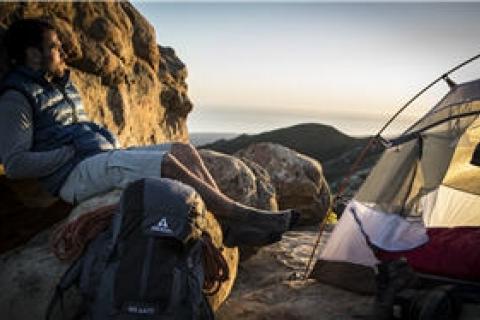
When enjoying wilderness camping, an additional set of environmentally friendly camping criteria comes into play.
 |
| Keep Mother Nature in mind by setting up camp away from the water and areas with delicate life. |
1. Avoid the water. Camp 300 feet from water — streams, rivers and lakes — to protect the resource. Draw water for cooking, drinking, dish washing and bathing and carry it to your camping area. Also be mindful of water control regions below dams. When water is released, a river is a treacherous place.
2. Identify and stay clear of fragile regions. The weight of a tent and even footsteps can destroy delicate habitat. Fragile alpine meadow vegetation can take many years to recover from abuse. Select resistant areas, such as those with little or no plant cover.
3. Honor designated low-use or no-use areas. Select sites with hardier vegetation such as grasses and sedges, rather than those with fragile lichens and mosses.
4. Move camp every two to three days or before signs of your presence become noticeable.
5. Wear soft-soled shoes around camp to minimize impact. A lightweight packable pair of slippers are a good choice for you and the campsite.
6. Learn not to dig. Use the natural lay of the land to drain water. Further, if an obstacle is so obtrusive that it must be dug up because it will impede comfort, find another site.
7. Forego the fire in areas of delicate habitat or open spaces. They leave scars. Plenty of lighting and cold weather gear provide what a fire generates – light and warmth. If you must have a fire, use an existing fire ring/site, a foil lined pit or fire pan. Fire pans should be big enough to contain a small fire and have at least a three-inch-high lip around the outer rim. Elevate the pan to avoid scarring the soil. Collect only dead and downed wood. Standing dead snags are an important part of the landscape, let them stand.
8. Consider wildlife. Set up camp in areas away from game trails, waterways and food sources that may be frequented by wildlife.
9. Move into someone else’s space. Use an established campsite to allow as much of the habitat to remain in its natural state as possible.
- 5514 views

